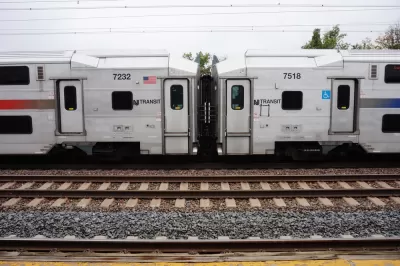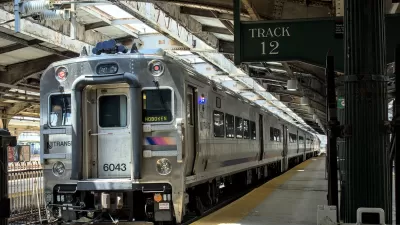The New Jersey Transit system, with an operating budget reduced to 10 percent of its 2009 total, has become more of a vessel for nepotism than a provider of safe transit service, according to a recent editorial.

"On Oct. 21, the commissioner for the state's Department of Transportation told lawmakers that all those economic sob stories were exaggerated, and that New Jersey Transit has 'sufficient money to fund its operations,'" begins an editorial by the New Jersey Star-Ledger. Yes, there's a "but" coming: "Two weeks later, the new executive director of NJ Transit established that Chris Christie's man in charge is clueless," writes the editorial board.
The executive director who dropped the truth bombs on the situation at New Jersey Transit is Steven Santoro, who recently spent four hours testifying that the administration of Governor Chris Christie "allowed a $3 billion agency to deteriorate into an industry disgrace," now "used as a cushy stopover for the governor's political cronies."
According to Santoro's testimony, the Christie Administration has had no trouble filling six-figure executive positions at New Jersey Transit, but has "neglected to fill 305 job vacancies related to safety needs."
This news is all of critical relevance due to the crash of New Jersey train #1614 at Hoboken Terminal in September. The New York Times published an article in October detailing the depths of the New Jersey Transit system's decline in October.
Back to the editorial, which makes a larger argument that budget cuts to transit operations have dire consequences. The Christie Administration has decreased the state subsidy for New Jersey Transit's operating budget from $348 million in 2009 to $33 million last year.
FULL STORY: N.J. Transit: It's worse than anyone thought | Editorial

Study: Maui’s Plan to Convert Vacation Rentals to Long-Term Housing Could Cause Nearly $1 Billion Economic Loss
The plan would reduce visitor accommodation by 25,% resulting in 1,900 jobs lost.

Alabama: Trump Terminates Settlements for Black Communities Harmed By Raw Sewage
Trump deemed the landmark civil rights agreement “illegal DEI and environmental justice policy.”

North Texas Transit Leaders Tout Benefits of TOD for Growing Region
At a summit focused on transit-oriented development, policymakers discussed how North Texas’ expanded light rail system can serve as a tool for economic growth.

San Diego County Sees a Rise in Urban Coyotes
San Diego County experiences a rise in urban coyotes, as sightings become prevalent throughout its urban neighbourhoods and surrounding areas.

Los Angeles County Invests in Wildfire Recovery for Parks, Trails, and Open Space
The $4.25 million RESTORE Program supports the recovery of parks, trails, and open spaces damaged by the January 2025 wildfires through targeted grants that promote community healing, wildfire resilience, and equitable access to nature.

Nevada Bills Aim to Establish Home Insurance Assurance Amidst Wildfire Risk
Republican sponsor hopes the FAIR plan would be “a true market of last resort.”
Urban Design for Planners 1: Software Tools
This six-course series explores essential urban design concepts using open source software and equips planners with the tools they need to participate fully in the urban design process.
Planning for Universal Design
Learn the tools for implementing Universal Design in planning regulations.
Alamo Area Metropolitan Planning Organization
City of Santa Clarita
Institute for Housing and Urban Development Studies (IHS)
City of Grandview
Harvard GSD Executive Education
Toledo-Lucas County Plan Commissions
Salt Lake City
NYU Wagner Graduate School of Public Service




























